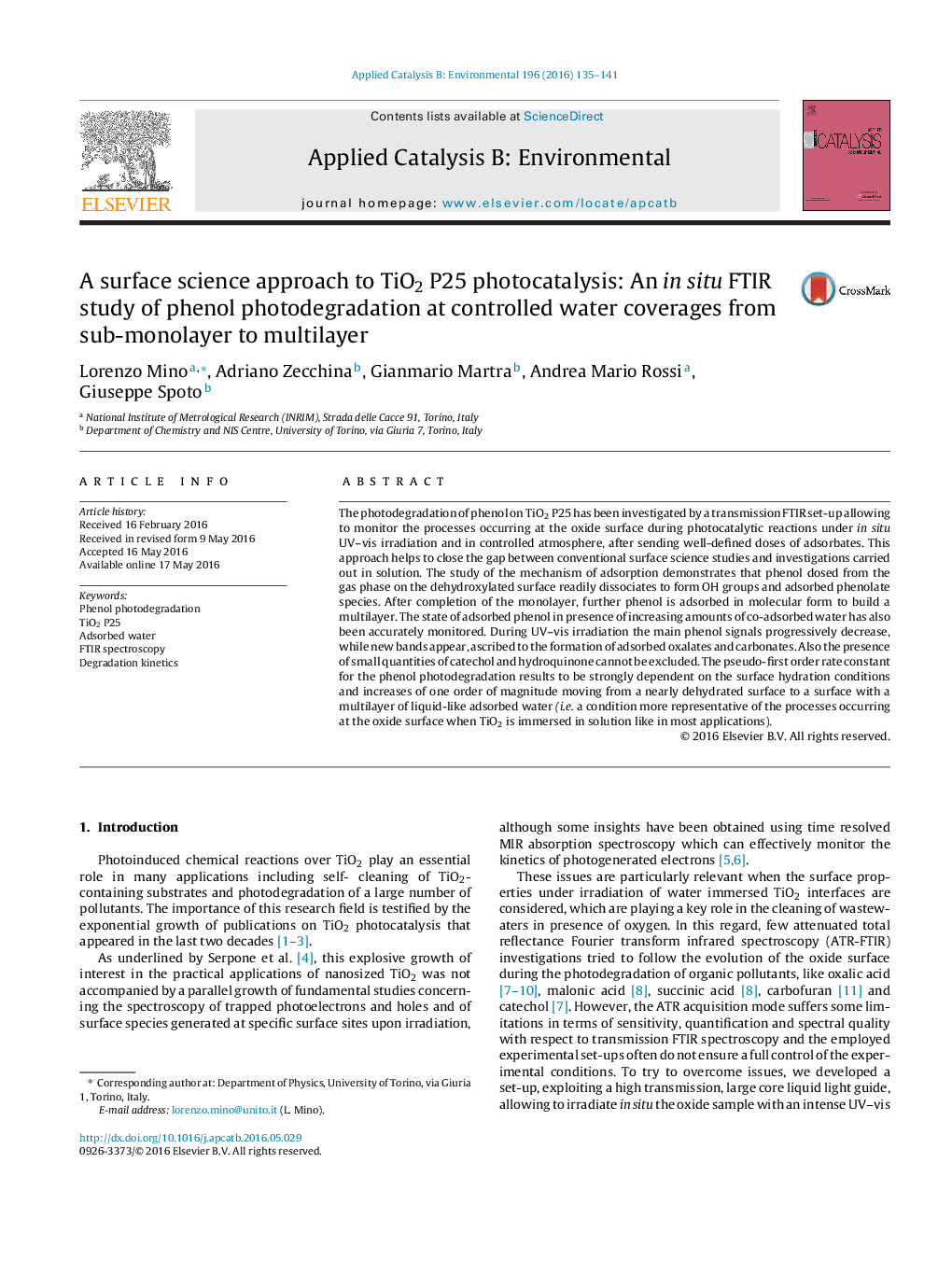| کد مقاله | کد نشریه | سال انتشار | مقاله انگلیسی | نسخه تمام متن |
|---|---|---|---|---|
| 44979 | 46390 | 2016 | 7 صفحه PDF | دانلود رایگان |

• New transmission FTIR set-up to investigate photocatalytic reactions under in situ UV–vis illumination and in controlled atmosphere.
• This approach helps to close the gap between conventional surface science studies and investigations carried out in solution.
• Detailed study of the processes occurring in the adsorbed layer during phenol photodegradation.
• Key role of co-adsorbed water highlighted by varying the water coverages from sub-monolayer to multilayer.
The photodegradation of phenol on TiO2 P25 has been investigated by a transmission FTIR set-up allowing to monitor the processes occurring at the oxide surface during photocatalytic reactions under in situ UV–vis irradiation and in controlled atmosphere, after sending well-defined doses of adsorbates. This approach helps to close the gap between conventional surface science studies and investigations carried out in solution. The study of the mechanism of adsorption demonstrates that phenol dosed from the gas phase on the dehydroxylated surface readily dissociates to form OH groups and adsorbed phenolate species. After completion of the monolayer, further phenol is adsorbed in molecular form to build a multilayer. The state of adsorbed phenol in presence of increasing amounts of co-adsorbed water has also been accurately monitored. During UV–vis irradiation the main phenol signals progressively decrease, while new bands appear, ascribed to the formation of adsorbed oxalates and carbonates. Also the presence of small quantities of catechol and hydroquinone cannot be excluded. The pseudo-first order rate constant for the phenol photodegradation results to be strongly dependent on the surface hydration conditions and increases of one order of magnitude moving from a nearly dehydrated surface to a surface with a multilayer of liquid-like adsorbed water (i.e. a condition more representative of the processes occurring at the oxide surface when TiO2 is immersed in solution like in most applications).
Figure optionsDownload as PowerPoint slide
Journal: Applied Catalysis B: Environmental - Volume 196, 5 November 2016, Pages 135–141